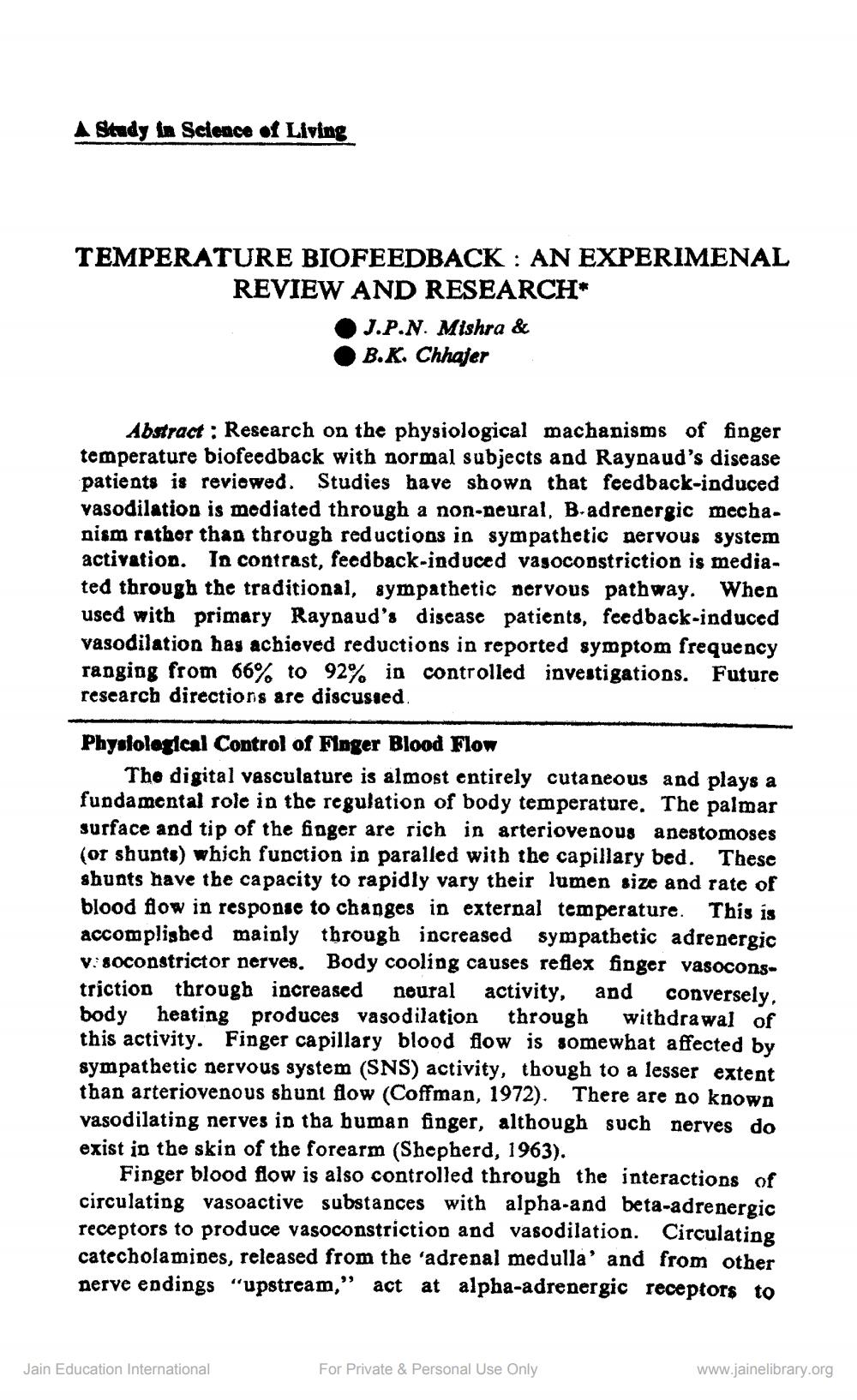________________
A Study in Science of Living
TEMPERATURE BIOFEEDBACK : AN EXPERIMENAL REVIEW AND RESEARCH*
J.P.N. Mishra & B.K. Chhajer
Abstract: Research on the physiological machanisms of finger temperature biofeedback with normal subjects and Raynaud's disease patients is reviewed. Studies have shown that feedback-induced vasodilation is mediated through a non-neural, B-adrenergic mecha. nism rather than through reductions in sympathetic nervous system activation. In contrast, feedback-induced vasoconstriction is mediated through the traditional, sympathetic nervous pathway. When used with primary Raynaud's disease patients, feedback-induced vasodilation has achieved reductions in reported symptom frequency rangiog from 66% to 92% in controlled investigations. Future research directions are discussed
Physiological Control of Finger Blood Flow
The digital vasculature is almost entirely cutaneous and plays a fundamental role in the regulation of body temperature. The palmar surface and tip of the finger are rich in arteriovenous anestomoses (or shupts) which function in paralled with the capillary bed. These shunts have the capacity to rapidly vary their lumen size and rate of blood flow in response to changes in external temperature. This is accomplished mainly through increased sympathetic adrenergic V: 80constrictor nerves. Body cooling causes reflex finger vasoconstriction through increased neural activity, and conversely. body heating produces vasodilation through withdrawal of this activity. Finger capillary blood flow is somewhat affected by sympathetic nervous system (SNS) activity, though to a less than arteriovenous shunt flow (Coffman, 1972). There are no known vasodilating nerves in tha buman finger, although such nerves do exist in the skin of the forearm (Shepherd, 1963).
Finger blood flow is also controlled through the interactions of circulating vasoactive substances with alpha-and beta-adrenergic receptors to produce vasoconstriction and vasodilation. Circulating catecholamines, released from the 'adrenal medulla' and from other nerve endings "upstream," act at alpha-adrenergic receptors to
Jain Education International
For Private & Personal Use Only
www.jainelibrary.org




